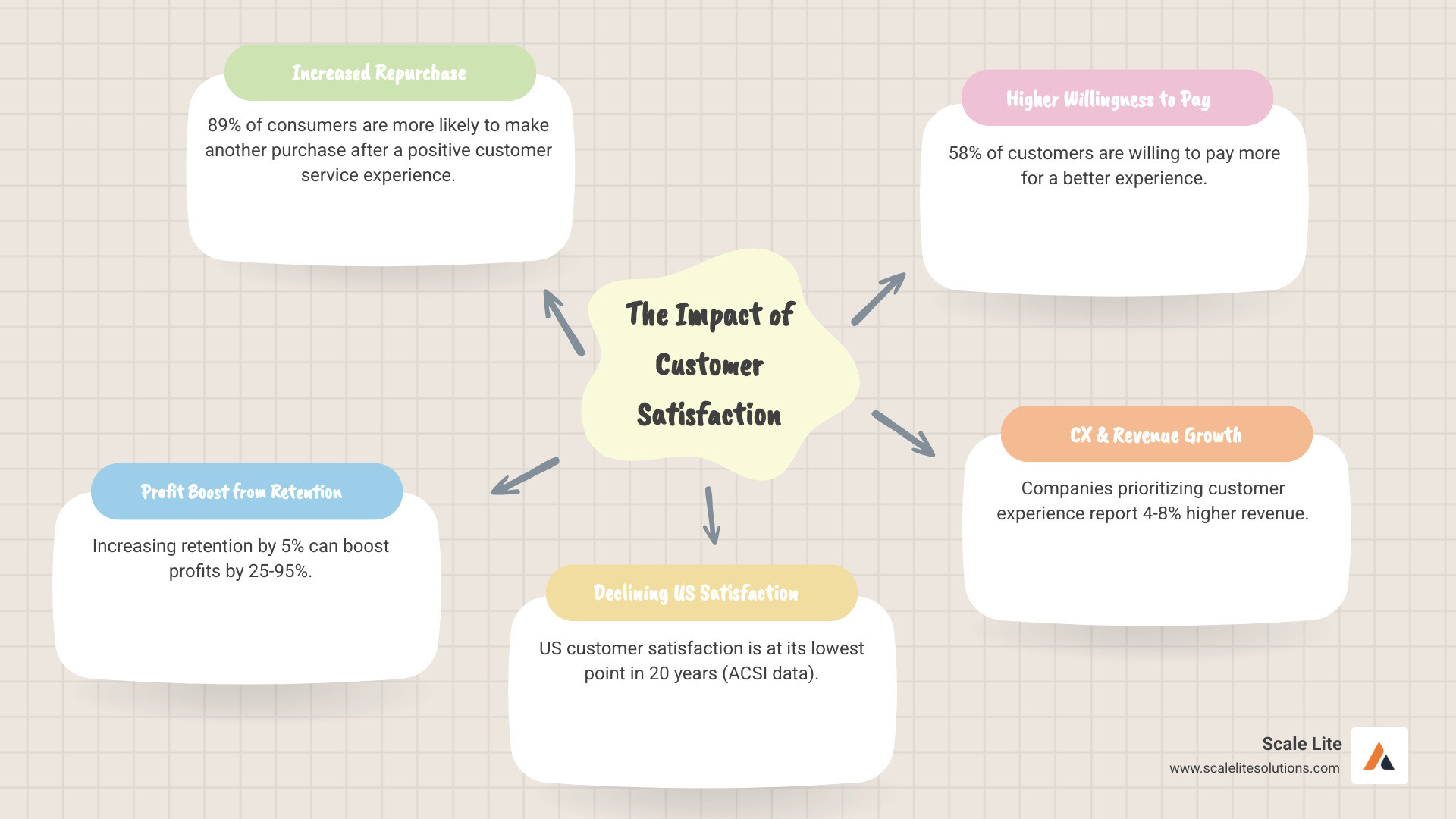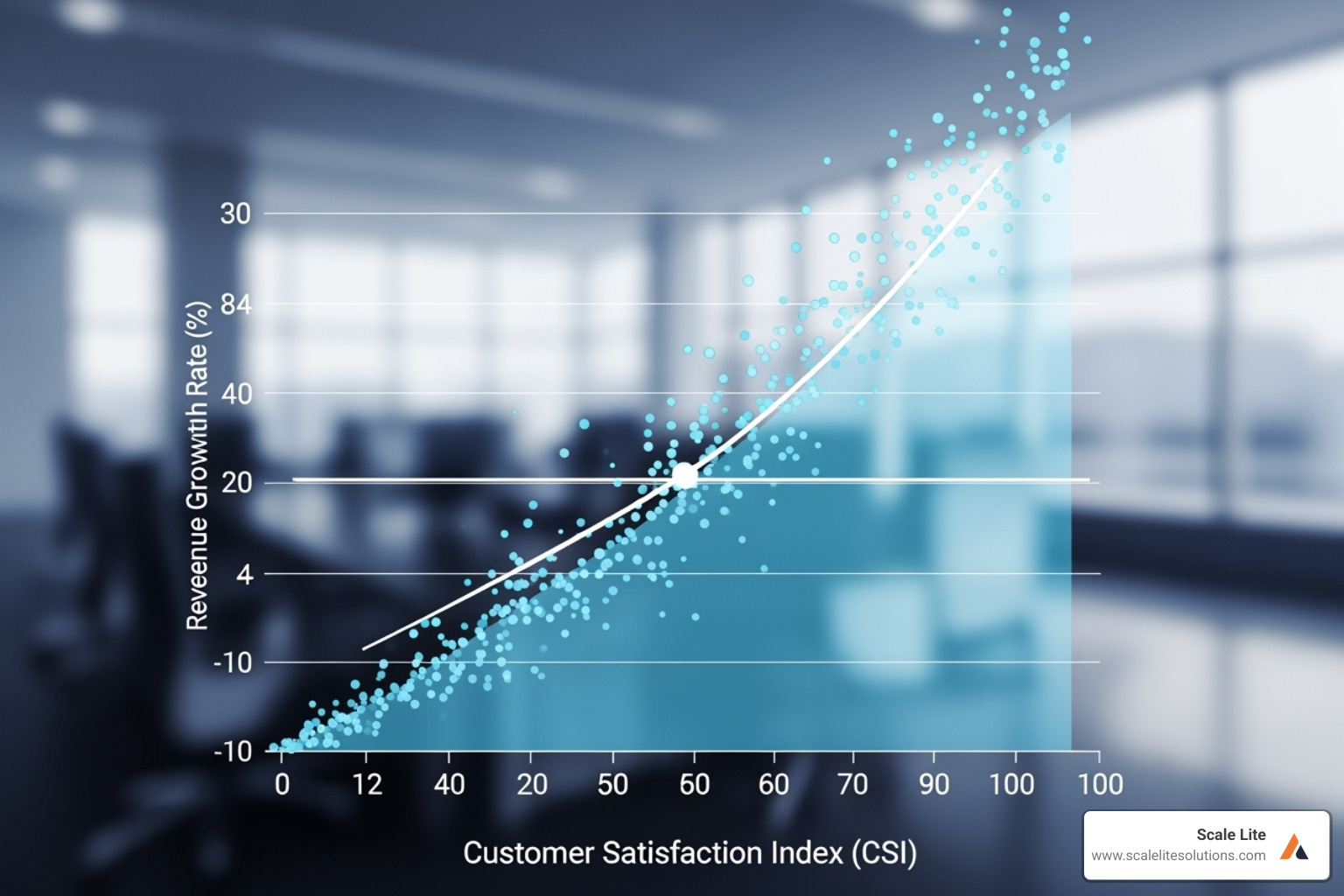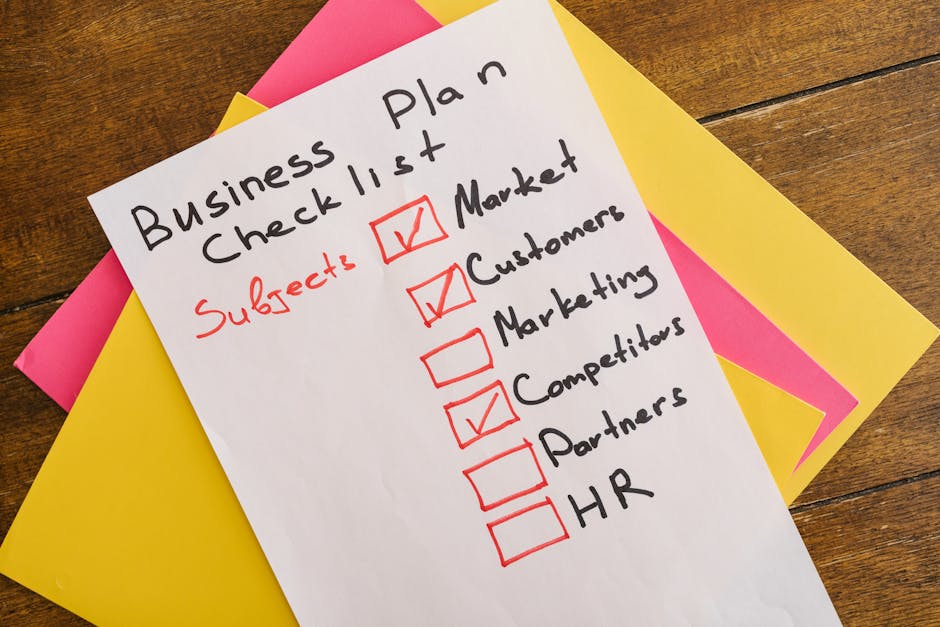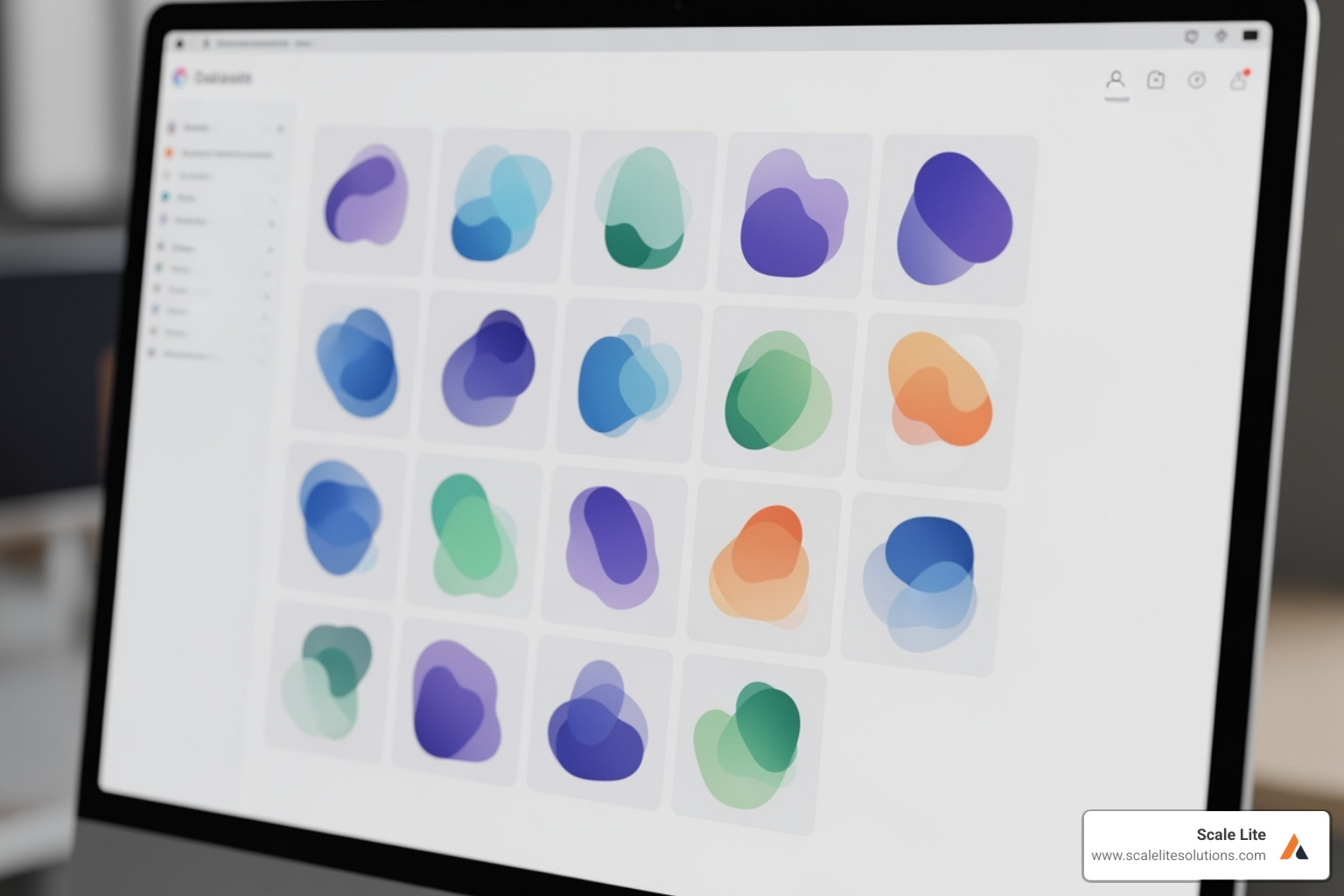
Happy Customers, Happy Life—How to Enhance Customer Satisfaction

Why Customer Satisfaction Drives Business Success
How to improve customer satisfaction? The answer begins with a simple truth: happy customers are the foundation of a thriving business. Research confirms that 89% of consumers are more likely to repurchase after a positive experience, and a mere 5% increase in customer retention can boost profits by 25% to 95%.
Quick Answer: How to Improve Customer Satisfaction
- Listen actively - Collect and act on customer feedback
- Personalize experiences - Use customer data to tailor interactions
- Ensure consistency - Deliver the same quality across all touchpoints
- Empower your team - Train staff and give them decision-making authority
- Respond quickly - Address concerns and questions promptly
- Measure progress - Track key metrics like NPS, CSAT, and CES scores
Yet, the reality is sobering. Customer satisfaction in the United States has hit its lowest point in nearly two decades, according to the American Customer Satisfaction Index. Despite heavy investment in customer experience tools, satisfaction is falling. For service-based businesses built on trust, this gap between effort and results is especially damaging, as one bad interaction can undo years of positive word-of-mouth.
The good news is that small, strategic changes can yield massive improvements in loyalty and revenue.
I'm Keaton Kay, founder of Scale Lite. I help service businesses modernize operations and build scalable systems. My background in private equity and enterprise sales has shown me that the businesses with the highest customer satisfaction are also the most valuable when it's time to scale or sell.

Important How to improve customer satisfaction? terms:
- How to achieve operational excellence?
- How to drive business growth?
- How to improve business performance?
At Scale Lite Solutions, we see customer satisfaction as the bedrock of success. When customers are genuinely satisfied, it creates a powerful ripple effect across the entire business.
The Direct Link Between Happy Customers and Higher Profits
The connection between delighted customers and profitability is undeniable. Satisfied customers are loyal, and loyal customers are profitable. Retaining a customer is far cheaper than acquiring a new one, and happy customers tend to spend more and more often, increasing their Customer Lifetime Value (CLV). In fact, customers who give a top experience score (10/10) spend 140% more and stay loyal for up to 6 years.

Furthermore, 58% of customers are willing to pay more for a better experience, allowing businesses to command premium pricing. Companies that prioritize customer experience report revenue increases of 4-8% above their market. As highlighted in a study on customer experience and revenue by Bain & Company, customer-centric strategies lead to superior financial performance. Investing in customer satisfaction isn't an expense; it's a strategic investment in growth, best guided by data-driven decision making.
The Ripple Effect of Employee Engagement
Happy employees create happy customers. The engagement and satisfaction of your team directly impact the quality of service customers receive. When your team feels valued and empowered, it translates into exceptional customer experiences.
Your frontline staff holds invaluable insights into customer needs and pain points. As noted by AskNicely, these employees are often "muted by policy or practices." Empowering them to make decisions and resolve issues on the spot leads to faster, more satisfying resolutions. This creates a virtuous cycle: happy customers foster a positive work environment, which motivates employees and reduces costly turnover.
Zappos is a prime example. Their legendary "WOW" service is a direct result of a company culture that empowers employees to go above and beyond. This commitment to employee well-being fuels their exceptional customer experience. How company culture affects customer satisfaction is profound, making a positive, customer-centric culture key to improving business performance.
10 Actionable Strategies to Improve Customer Satisfaction
Now that we understand the "why" behind customer satisfaction, let's dive into the "how." How to improve customer satisfaction? It requires a multi-layered approach centered on the customer.

Think of it like tending a garden: consistent care and attention are necessary for growth. The strategies that truly move the needle focus on proactive support, consistency, robust feedback loops, and genuine empathy.
Here are ten effective approaches:
- Actively Listen and Act on Customer Feedback
- Personalize the Customer Experience
- Create a Seamless Omnichannel Experience
- Empower Your Team with Training and Tools
- Respond Promptly and Proactively
- Ensure Consistent Quality
- Simplify the Customer Journey
- Build a Customer Community
- Reward Loyalty
- Continuously Innovate and Improve
Let's explore some of these key strategies.
1. Actively Listen and Act on Customer Feedback
The most powerful way to show you care is to listen. This means going beyond collecting feedback and actually using it. Create multiple channels for input—surveys, social media monitoring, and direct conversations—and treat every comment, especially negative reviews, as free consulting advice.
As the team at HubSpot notes, "Responding to customer reviews shows customers that you listen." The real magic happens when you close the loop: analyze the feedback, make changes, and inform customers about the improvements. Research on customer satisfaction trends shows 53% of shoppers feel their feedback goes nowhere. Avoid this pitfall by turning feedback into action, which is a cornerstone of effective marketing for business growth.
2. Personalize the Customer Experience
Customers want to feel valued as individuals, not as numbers. Personalizing the experience means using customer data to tailor interactions. The impact is significant: SuperOffice found that 49% of buyers made impulse purchases after a more personalized experience.
Personalization can be as simple as using a customer's name and remembering their service history. It also means anticipating their needs, like proactively scheduling maintenance or following up on a past issue. A robust contractor customer relationship management system is invaluable here, providing your team with the context needed for custom support. As Forbes highlights in an analysis of personalization, it's about creating a unique journey for each customer, which in turn boosts satisfaction.
3. Create a Seamless Omnichannel Experience
Customers expect a consistent experience whether they contact you via your website, phone, or social media. Creating a seamless omnichannel experience means they never have to repeat their story. Your team should have full context of previous interactions, regardless of the channel.
This consistency builds trust and reduces friction. According to McKinsey research, the overall customer journey is 30% to 40% more strongly correlated with satisfaction than any single touchpoint. The entire experience matters. To achieve this, focus on scalable service operations that integrate your communication channels. When everything works together smoothly, customers notice and reward you with their loyalty.
4. Empower Your Team with Training and Tools
Your employees are the face of your business. Empowering your team means giving them the training and tools to create exceptional experiences. This includes training in empathy and problem-solving, which Zendesk research suggests is even more valuable than customer service experience itself.
Equally important is giving frontline staff the authority to make decisions and resolve issues on the spot. This avoids customer frustration and shows respect for their time. The right technology, like AI-driven workflow automation, can handle routine tasks, freeing up your team to focus on complex issues requiring a human touch. Confident, supported employees naturally create happy customers.
How to Measure and Leverage Technology for Customer Satisfaction
Improving customer satisfaction requires knowing if your strategies are working. This means diligent measurement and the smart use of technology.

Think of it like a car's dashboard: without metrics, you're driving blind. Modern tools provide real-time insights, forming the foundation for informed decisions on where to invest your time and resources.
Key Metrics to Track Customer Happiness
Three core metrics provide a complete picture of customer happiness:
Net Promoter Score (NPS): This metric measures customer loyalty by asking how likely they are to recommend your business. As explained in What is NPS?, it's a powerful predictor of business growth by categorizing customers as Promoters, Passives, or Detractors.
Customer Satisfaction Score (CSAT): This provides immediate feedback on specific interactions, like a service call. By asking, "How satisfied were you with today's service?" you get a snapshot of a particular touchpoint. Understanding CSAT shows how it helps spot problems early.
Customer Effort Score (CES): This measures how easy it was for a customer to get their issue resolved. As detailed in A look at Customer Effort Score, customers value simplicity. A lower effort score correlates with higher satisfaction.
Benchmarking these scores against industry data from sources like the American Customer Satisfaction Index helps you set realistic improvement goals.
How to improve customer satisfaction with technology
Technology is a powerful tool for amplifying the human touch, not replacing it. It helps make every interaction more meaningful and efficient.
CRM Systems: A good CRM acts as your business's memory, storing customer history and preferences. This allows for the kind of personalized service that builds strong relationships. For service businesses, CRM Software for Contractors is essential for delivering consistent experiences.
AI and Automation: AI-powered chatbots can provide 24/7 support for routine questions, freeing up your human team for complex issues. AI-Driven Workflow Automation ensures consistency in processes like follow-ups and reminders, which customers appreciate.
Predictive Analysis: By analyzing customer data, you can move from reactive to proactive service. This means identifying potential issues—like needed maintenance—before the customer is even aware of a problem.
Self-Service Options: A well-designed knowledge base or FAQ section empowers customers to find answers on their own, providing immediate solutions and freeing up your team's time for more in-depth support.
Learning from the Best and Overcoming Common Problems
The journey to exceptional customer satisfaction has its challenges. Bain & Company research famously uncovered a "delivery gap": 80% of companies believe they deliver a superior experience, while only 8% of customers agree. This gap highlights a major opportunity for businesses that get it right.
What We Can Learn from Customer Service Champions
Some companies have mastered how to improve customer satisfaction. Their secret is making it a core part of their culture.
- Zappos built its reputation on "WOW" service, empowering agents to do whatever it takes to make customers happy. Their core values show this commitment is woven into their DNA.
- Nordstrom is legendary for its trust-based return policy and empowered employees. As detailed in research on Nordstrom's customer experience, allowing staff to make on-the-spot decisions creates exceptional service.
- Southwest Airlines fosters a fun, customer-centric culture where employee personality shines, creating memorable and positive travel experiences.
The common thread is that these companies create experiences worth talking about, driven by happy, empowered employees. This approach is central to how to drive business growth.
How to improve customer satisfaction by tackling common challenges
Most businesses face predictable roadblocks. Here’s how to steer them:
- Misaligned Teams: When sales, service, and billing operate in silos, the customer experience feels fragmented. The fix is a shared, customer-centric vision with cross-departmental goals and communication.
- Inconsistent Service: A lack of standardized processes leads to a lottery experience for customers. Combat this with clear training, documented procedures, and technology to ensure every interaction meets a high standard.
- Budget Constraints: Many powerful strategies are low-cost. Active listening is free, and empowering employees to solve problems can save money. Focus on high-impact, low-cost changes first.
- Evolving Expectations: Customers now expect seamless, easy interactions. Stay ahead by gathering feedback and building operational flexibility to adapt quickly.
Overcoming these challenges requires making customer satisfaction everyone's job. When you build systems for satisfaction, like in businesses that run themselves, these problems become easier to solve.
Frequently Asked Questions about Enhancing Customer Satisfaction
Here are answers to common questions business owners have about how to improve customer satisfaction.
What is the difference between customer service and customer experience?
Think of it this way: customer service is a single chapter, while customer experience is the entire book.
- Customer Service is reactive. It's the specific interaction when a customer needs help, like a phone call or an email to resolve an issue.
- Customer Experience (CX) is proactive and holistic. It includes every touchpoint a customer has with your business, from their first visit to your website to their final invoice and beyond.
Great service can fix a bad experience, but a great experience prevents problems from happening in the first place.
How can a small business with a limited budget improve customer satisfaction?
Many of the most powerful satisfaction strategies cost little to nothing. They require intention, not a big budget.
- Focus on personal connection: Remember customer names and details from past conversations. This personal touch builds strong loyalty.
- Empower your team: Give employees the authority to solve problems on the spot. A small discount to fix an issue is cheaper than losing a customer.
- Listen and respond: Actively solicit and act on feedback from all channels, including online reviews. This shows you care and provides valuable insights.
- Build a community: Create a space, like a simple social media group, for customers to connect. Happy customers can become your best advocates.
How long does it take to see results from customer satisfaction initiatives?
The timeline depends on the strategy, but you can expect both short-term and long-term gains.
- Quick Wins (Weeks): You can see immediate improvements in customer mood by fixing obvious pain points, such as slow response times or confusing processes.
- Long-Term Impact (Months to Years): Building deep loyalty, increasing customer lifetime value, and earning a strong reputation for service is a longer game. It requires consistency.
It's better to make small, sustainable improvements than to launch a big initiative that fades. Consistency is what builds trust and drives long-term growth. Improving customer satisfaction is an ongoing commitment, not a one-time project.
Conclusion
How to improve customer satisfaction? As we've explored, the answer lies not in a single quick fix, but in an ongoing commitment to a customer-centric strategy. It's a continuous journey of listening, personalizing, empowering your team, and leveraging smart technology.
Satisfied customers are the foundation of business success, evolving from buyers into loyal advocates. The strategies discussed work in concert to create genuine customer delight. In today's market, where overall satisfaction is low, businesses that prioritize the customer experience will stand out and build significant value.
Closing the gap between perceived and actual customer experience is the key to sustainable growth. For service-based businesses, this journey doesn't have to be overwhelming. Scale Lite Solutions helps modernize operations through technology and automation, creating systems that make exceptional customer service effortless. We specialize in helping service industries build lasting relationships and drive growth through every interaction.
The path forward is to start with small, consistent improvements. These actions compound over time, changing an ordinary business into an extraordinary one.
Ready to see how technology can amplify your customer satisfaction efforts? Learn how AI and automation can transform your customer experience and find what's possible when you combine genuine care with smart systems.






